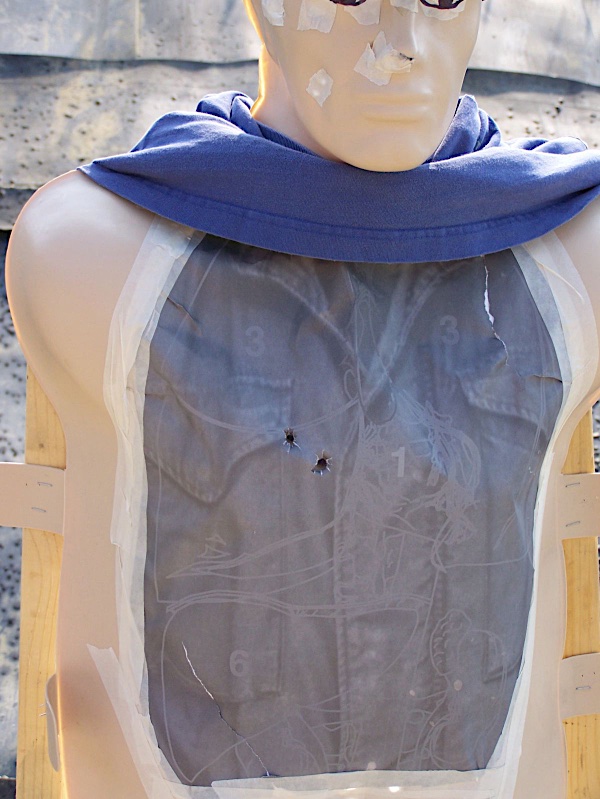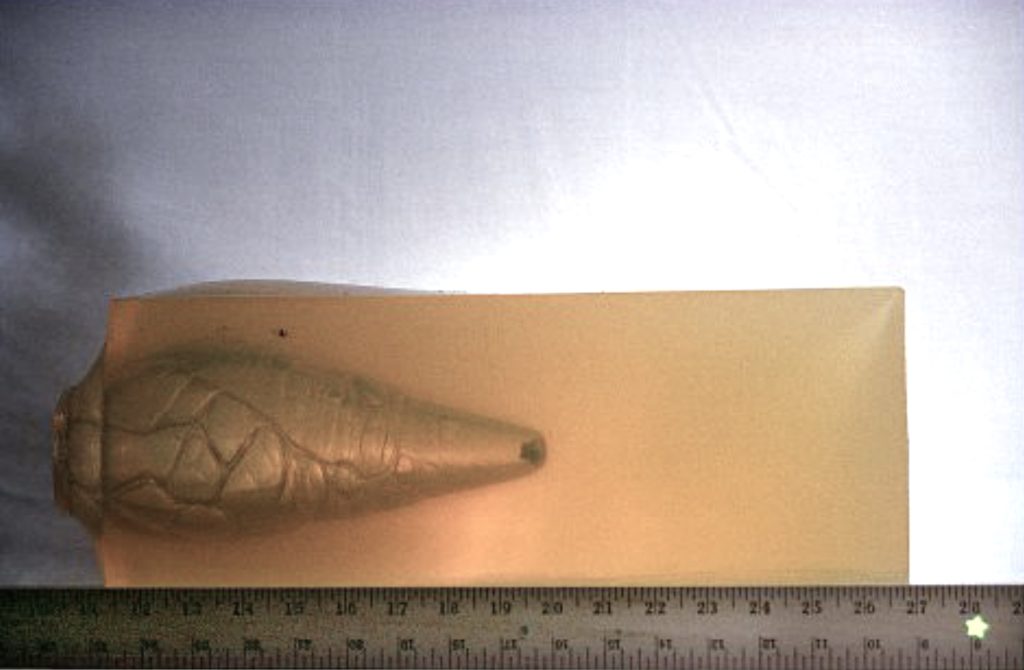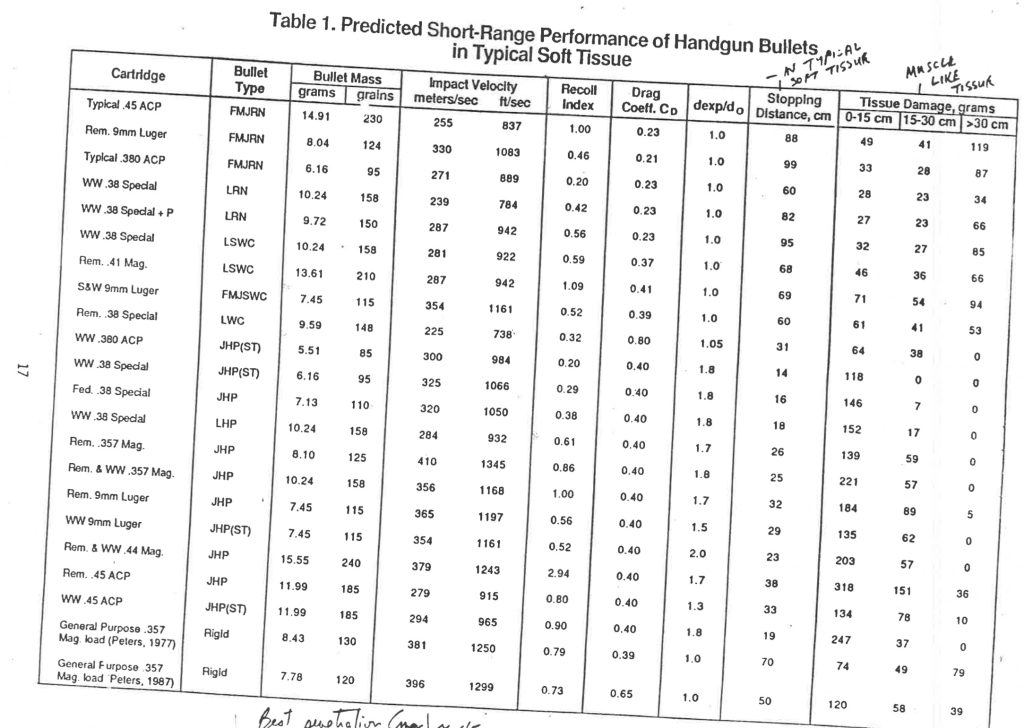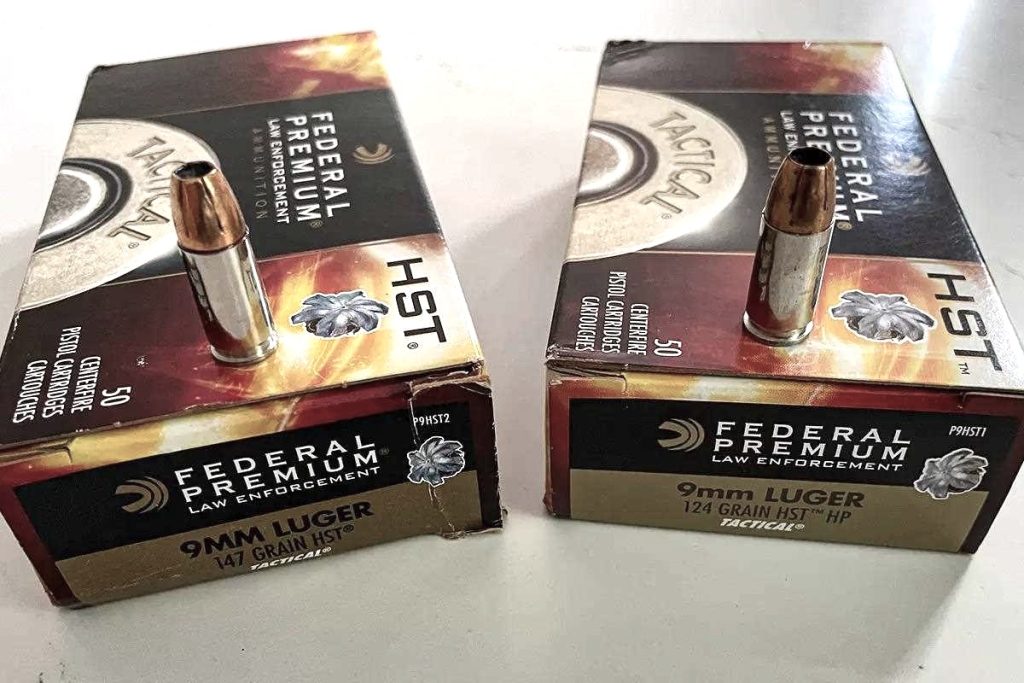
By Dave Spaulding
I recently read yet another a post on the internet that caused me to scratch my head. The author made an impassioned plea for the superiority of the .45 ACP cartridge over all others claiming, “Ball .45 will stop a man 9 out of 10 times with a well-placed hit.”
He based his assertion on testing that took place 100 years ago. It was quite clear the author wasn’t stating fact but was trying to shape others’ thoughts based on his opinion. Alarmingly, less informed individuals were thanking him for his “timely information.” The sad thing is people were accepting what he wrote as gospel for no other reason than they had read it on the internet.
For many years I was deeply involved in the “stopping power” debate. I read everything I could, talked with trauma surgeons, read through medical examiners, coroner investigators, and even collected my own shooting reports.
In 1987 I wrote my master’s thesis on the topic entitled The Incapacitation Effectiveness of Police Handgun Ammunition and based my conclusions on shooting data that was supplied by law enforcement agencies across the country. My agency allowed me to use its letterhead to reach out and solicit shooting reports and I was very pleased at the response I received.
By the time I finished, I had a kitchen table stacked with shooting/autopsy reports from all over the country with so much data I could hardly process it. One thing stood out, though; for every shooting in which a particular caliber and bullet style performed well I had also received one in which it failed.

In truth, I couldn’t really draw a conclusion based on the data I’d received. So I decided to bolster my thesis by testing popular police ammunition in duct sealant, water-soaked “undertaker’s” cotton, and ballistic gelatin as all three were commonly used to evaluate ammunition performance in the gun magazines of the time.
The three test mediums resulted in different performance which shouldn’t have surprised me considering the three mediums were really nothing alike.

Upon its release in 1987, I became fascinated with the FBI’s Wound Ballistic Panel report, a group that was formed after the April, 1986 shootout involving a team of FBI Agents and two hard core robbery suspects in Miami, Florida. While the robbers were killed during the confrontation, so were several FBI agents. An extensive study resulted with ballistic experts from across the country being brought in to try and determine what went wrong and what could be done to ensure such a tragedy never happened again.

It was determined the FBI’s issued 9mm load, the Winchester 115 grain Silvertip hollow point, didn’t have sufficient penetration ability and that a bullet that could push deeper, especially when shooting through other objects to penetrate the torso, would be the right formula.
I pored over the report when it was issued as it made so much sense and I lobbied my agency hard to get them to adopt the new Winchester 147 grain OSM hollow point, even though law enforcement had gotten good performance from the 115 grain Silvertip in recent shootings.
Interestingly, a friend of mine who served in the intelligence community told me they were very pleased with the Silvertip. He told me they had issued it to several protection teams they had trained across Africa and it performed very well in a number of shootings. He advised they were a bit perplexed by the FBI’s stance at the time, but science was science and couldn’t be disputed until it was proved wrong.
As it turned out, my former agency had one of the first shootings in the nation with the Winchester 147 grain OSM load and it failed miserably in a scenario that would seem to have been perfect for its “enhanced” penetration capability.
One of our deputies responded to a report of a child kidnapping. The deputy was able to stop and confront the kidnapper in a parking lot. He was about ten feet from the suspect when he engaged him, pointing his Smith & Wesson Model 669 through the open passenger window of the suspect’s vehicle. The child was sitting in the passenger seat while the suspect sat in the driver’s seat with his hands on the steering wheel.
When the suspect tried to flee, the deputy fired one round of Winchester 147 OSM grain at him, hitting him in the right arm which blocked the bullet’s path to his chest cavity. That should have been no problem as this was a penetrating round, so it should have passed through the arm and entered the suspect’s chest much like the Miami scenario. It did nothing of the kind. It stuck in the suspect’s elbow allowing him to flee, resulting in a high-speed chase involving multiple agencies and several crashed cars.
“But the ballistic gelatin said!.”
Once the suspect was in custody, he was taken to the hospital where it was determined the bullet didn’t do sufficient damage to warrant removal. To the best of my knowledge, he still has the bullet in his arm to this day.
The remaining rounds in the gun were chronographed at the crime lab from the Model 669 and determined to have an average velocity of 630 feet per second. The ammo that I lobbied so hard for was immediately removed from service and the Silvertips were re-issued at a substantial cost to the department.
It took a long time for me to recover any credibility and I became an outspoken critic of the 147-grain load. It shouldn’t be hard to understand why. Noted trainer and writer Massad Ayoob took this story and retold it whenever the subject of the 147 grain 9mm was brought up.

To be fair, current generation 147 grain 9mm loads have proven to be quite good with the Federal 147 grain HST leading the pack. I carry the 147 HST in my EDC GLOCK 19 as I have been quite impressed with the actual street results of this load. In addition, HST (and its American Eagle training equivalent) has shown to be exceptionally accurate and I like to shoot 3×5 index cards at 25 yards.

That said, I consider ballistic gelatin tests to be an indicator of potential performance and not what a bullet will do once it enters the human body. History has shown this to be true. In the intervening years since that 1987 paper, we’ve had enough shootings to be able to correlate tissue with gelatin for a higher level of accurate prediction.
In this apples-to-apples testing environment, the best .45 bullet will create a 15 to 18 percent larger wound cavity than the best 9mm. That’s certainly encouraging and would lead one to believe a bigger bullet is a better bullet. Now for the harsh reality: that 15 to 18 percent is measured in millimeters. That means that in the real world, it’s not enough to make up for poor shot placement.
To stop someone with a handgun bullet you need to either hit an important organ (brain, spinal column, aorta, heart, etc.) or create rapid blood loss by severing a major artery. Any of the commonly used law enforcement/defensive rounds — regardless of caliber — will do that. Keep in mind that may take multiple hits (that’s highly likely, some would say) as a drugged-up or determined adversary can be tough to stop quickly with any small arm.
In my classes I have a drill each student shoots to see if the gun/caliber they carry is compatible with their level of skill. I call it the “Two Second Drill” and it is merely four rounds fired at twenty feet into a 6 x 9-inch rectangle. That space represents the high chest region where many vital organs are located. Twenty feet is the length of a typical confrontation distance and four rounds fired in two seconds is a reasonable time limit based on the history of armed personal defense scenarios.

Broken down, the drill is the first-round hits in one second from a ready/muzzle diversion position with the final three spread over an additional second or in splits of .33 seconds. To me, this shows the student can control the recoil of their chosen pistol and caliber.
It’s amazing how many people can’t accomplish this simple drill because they’re shooting “too much gun” for their individual skill level.
These days I pay little attention to the stopping power debate unless I happen to stumble across something really stupid like the one mentioned above. While confidence in a particular gun and caliber is important, it’s more important that you be able to control the gun/caliber in accurate, reasonably rapid fire as multiple accurate shots will be what likely ends a gunfight. Oh yeah…you might also have to do that while moving rapidly, not just taking a single sidestep.
After all these years, I’ve come to understand that the secret to handgun stopping power is where you shoot your adversary and how many times you can shoot them. That requires training, practice, some skill, and a level of ruthlessness that permits you to stand up and exchange potentially life-ending rounds with another human being. Some old west gunfighters called it “deliberation” a word I’m trying to bring back when combative pistol craft is discussed.
No amount of gear or use of a “wonder” gun will change that. In the end, what will a person be doing after you shoot them? Probably much the same thing they were doing before you shot them. That’s a harsh reality, but one it’s important to learn.

15 Responses
Use what you shoot most accurately with and have the most faith in, since you’re the one that has to pay for choosing poorly.
“Use what you shoot most accurately with…”
And that is mostly a round that doesn’t cause excessive muzzle-flip allowing the shooter faster follow-up shots…
Another guy who hunts grizzlies with a .32 acp. If you’re round is powerful enough, you won’t need to fire four rounds into the 6×9 inch rectangle. Just one will do.
The article – especially the author’s candid admission of his mistake – demonstrates the opposite of his entering premise.
Cops use the 9mm because the bean counters determined the pistols and ammo are cheaper than the revolvers used previously, and the “new breed of cop” (i.e. women) could handle the recoil. The 125 gr. .357 magnum is still the standard by which all other cartridges are measured, based on both empirical and anecdotal data, but most shooters would rather have their ineffective but “kewl” 9mm pistols with 15 rounds.
They’re welcome to them, but personally I’d rather survive a gunfight.
Sure thing, buddy. 124 Grain 354 is just as adequate.
Ruthlessness and deliberation are important words in this context, to be sure.
The “best” defensive gun is the one that you can aim and shoot effectively. Sure, a .22lr pistol is not a “ideal” handgun for defensive use, but . . . if you can use it comfortably, and put your shots on target, it’s better than nothing. I’ve shot 9mm, .357 magnum, and .45acp (and I’ve CARRIED all three, at various times). Sure, all other things being equal, I would probably carry a .45, but . . . my Kimber 1911 is simply larger and heavier than my other options. With modern defensive ammunition, nearly any caliber can “work” as a defensive option. Yes, some are “better” than others, but if it’s too large/bulky/heavy for you to carry, or too energetic for you to shoot comfortably, or you can’t reliably keep it “on target”, another gun is probably a better option for you.
At the end of the day, there is no substitute for accurate shooting and good shot placement. A .22 in the heart is a better option than a .45 in the leg. Carry what you can use effectively, and try to make your shots count. Carry/use what you are comfortable with, and what you can actually hit your target with. People who get doctrinaire about “stopping power” and the caliber wars are missing the narrative – carrying Dirty Harry’s S&W .44magnum does you NO good if you can’t reliably shoot it and hit your target. This entire discussion is become boring and stupid.
Here we go again.
One of the oldest debates in the gun world 45 vs 9mm.
The reasons the FBI has switched to 9mm is simple.
1. Cost of training,” It takes too much time to teach personnel to shoot accurately.
2. Staffing with people with less stature. “No prior training or experience”.
3. Studies that are written to support their view.
In my training, well-placed rounds far outweigh high capacity, “Just spray by their methodology.
Anyone who doesn’t carry and use a .500 calibre firearm is a wienie, who should just stay indoors. With a .500 calibre bullet, a single hit, anywhere on the body. will vaporize body tissue to a diameter of 3 inches, totally disabling any human attacker. We are way too far along to be using little bullets to stop attacks. If you gotta shoot to stop the threat, vaporizing body parts, and critical internals is the most efficient way to end an uninvited gun battle.
.500 ammunition is likely very effective at disposing of 4 legged varmints, too.
Actually, I’m thinking of a .69 cal. ball ammo used quite effectivly during the 1850’s. Few people were able to continue their aggression after being struck or “vaporized ” by this monster 400 grain plus soft lead “planet”. With a hit anywhere on a body there would absolutely be no need for additional rounds, thus a weight saving factor of serious significance. Modernization utilizing small, puny projectiles flies in the face against proven historical data, and more significantly common sense.
Be able to apply the basic fundamentals under duress and in a variety of environments. Everything else is secondary.
Even with a .500 cal. bullet, or .69 cal. 400 grain ball, it all comes down to shot placement. Plus, those old muzzle loaders are slow to get off a second shot.
While I like the Winchester .45 JHPs that expand to 1 inch in jello.. I realize not everyone can handle a .45 well. Especially a light one!
Same goes for .40 S&W (which is a fine cartridge just as the .357 Sig.)
About all I can say is, and this does go back to Jeff Cooper, carry the most powerful gun you can CONTROL WELL and be light enough to carry all day! Does not help you if you cannot shoot it well nor carry all day cause it is to heavy or big..
Oh, and what do I carry? Most of the time a Sig P365XL with a good JHP round. Yea I have .45s and 10mms, even sometimes in the winter I pack ’em. But I’d say 90% of the time that Sig, or it’s little brother the original P365, goes with me.
And I am a Jeff Cooper fan!